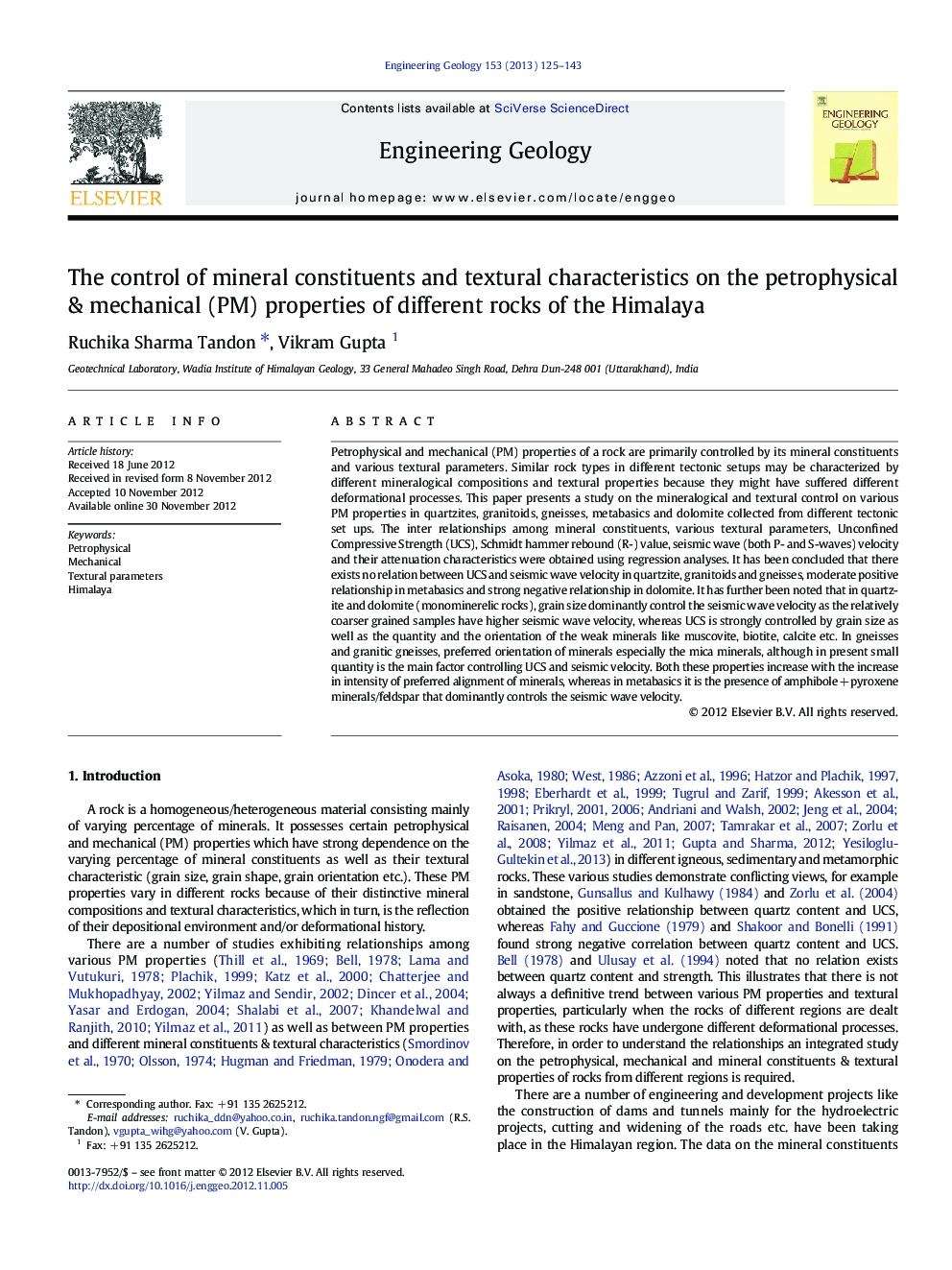| کد مقاله | کد نشریه | سال انتشار | مقاله انگلیسی | نسخه تمام متن |
|---|---|---|---|---|
| 4743768 | 1641831 | 2013 | 19 صفحه PDF | دانلود رایگان |

Petrophysical and mechanical (PM) properties of a rock are primarily controlled by its mineral constituents and various textural parameters. Similar rock types in different tectonic setups may be characterized by different mineralogical compositions and textural properties because they might have suffered different deformational processes. This paper presents a study on the mineralogical and textural control on various PM properties in quartzites, granitoids, gneisses, metabasics and dolomite collected from different tectonic set ups. The inter relationships among mineral constituents, various textural parameters, Unconfined Compressive Strength (UCS), Schmidt hammer rebound (R-) value, seismic wave (both P- and S-waves) velocity and their attenuation characteristics were obtained using regression analyses. It has been concluded that there exists no relation between UCS and seismic wave velocity in quartzite, granitoids and gneisses, moderate positive relationship in metabasics and strong negative relationship in dolomite. It has further been noted that in quartzite and dolomite (monominerelic rocks), grain size dominantly control the seismic wave velocity as the relatively coarser grained samples have higher seismic wave velocity, whereas UCS is strongly controlled by grain size as well as the quantity and the orientation of the weak minerals like muscovite, biotite, calcite etc. In gneisses and granitic gneisses, preferred orientation of minerals especially the mica minerals, although in present small quantity is the main factor controlling UCS and seismic velocity. Both these properties increase with the increase in intensity of preferred alignment of minerals, whereas in metabasics it is the presence of amphibole + pyroxene minerals/feldspar that dominantly controls the seismic wave velocity.
► The SHR and UCS for the Himalayan rocks are related by UCS = 12.398e0.0365SHR.
► Vp and Vs in leucogranites & metadolerites are mainly influenced by % of minerals.
► Vp and Vs in quartzite, gneisses, are greatly controlled by texture.
► UCS primarily depends on quantity and orientation of the weak minerals like mica.
Journal: Engineering Geology - Volume 153, 8 February 2013, Pages 125–143